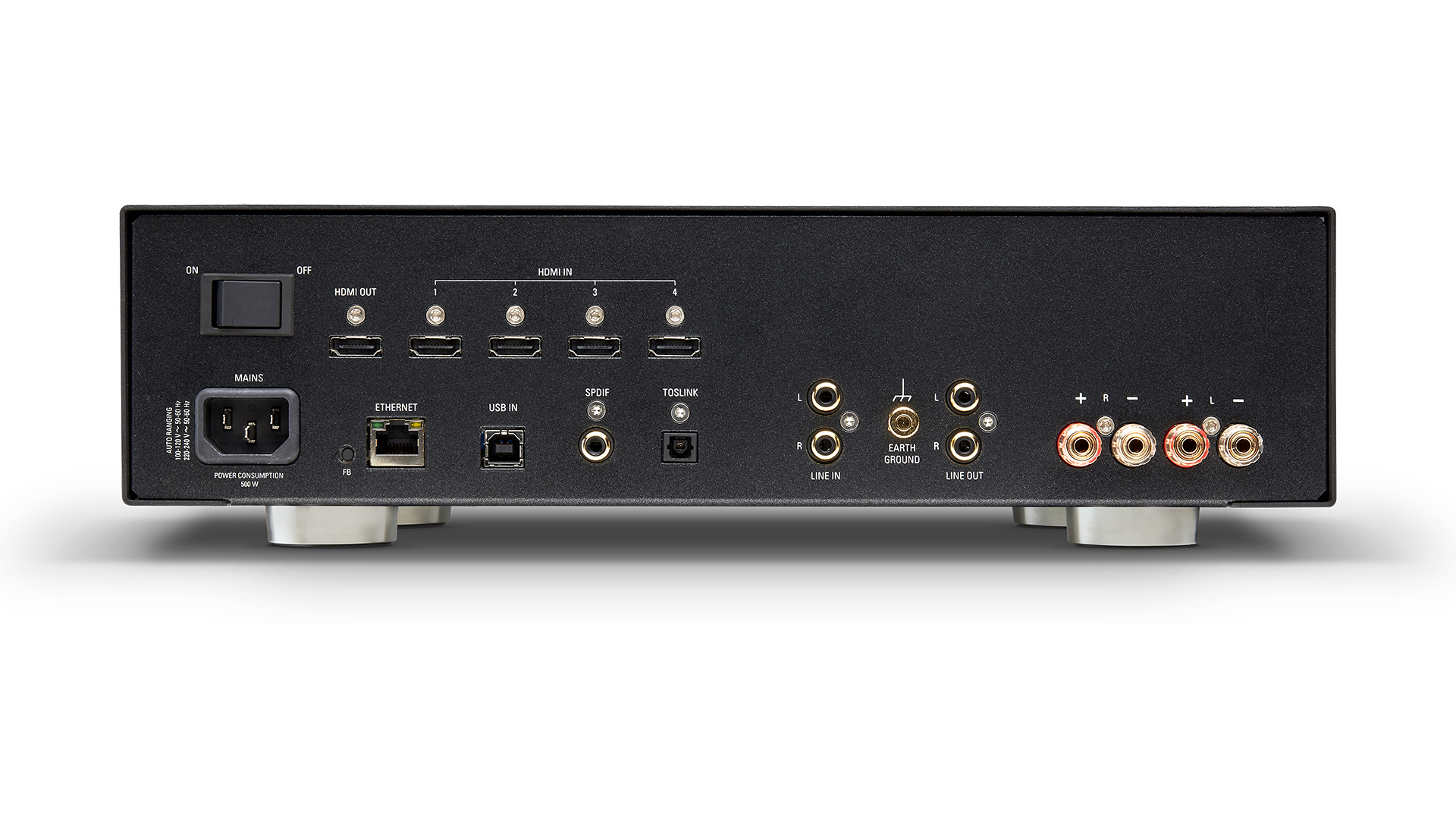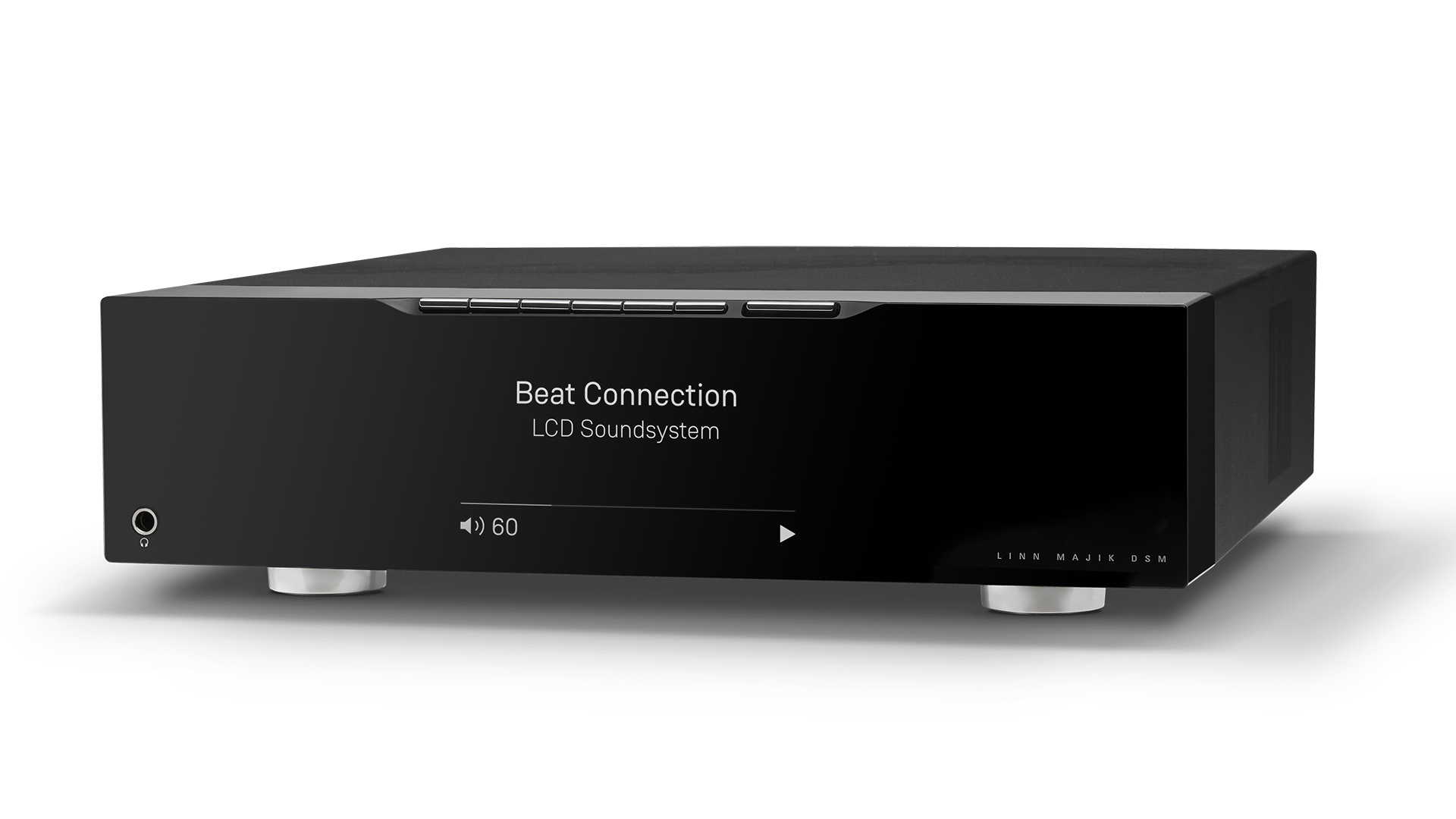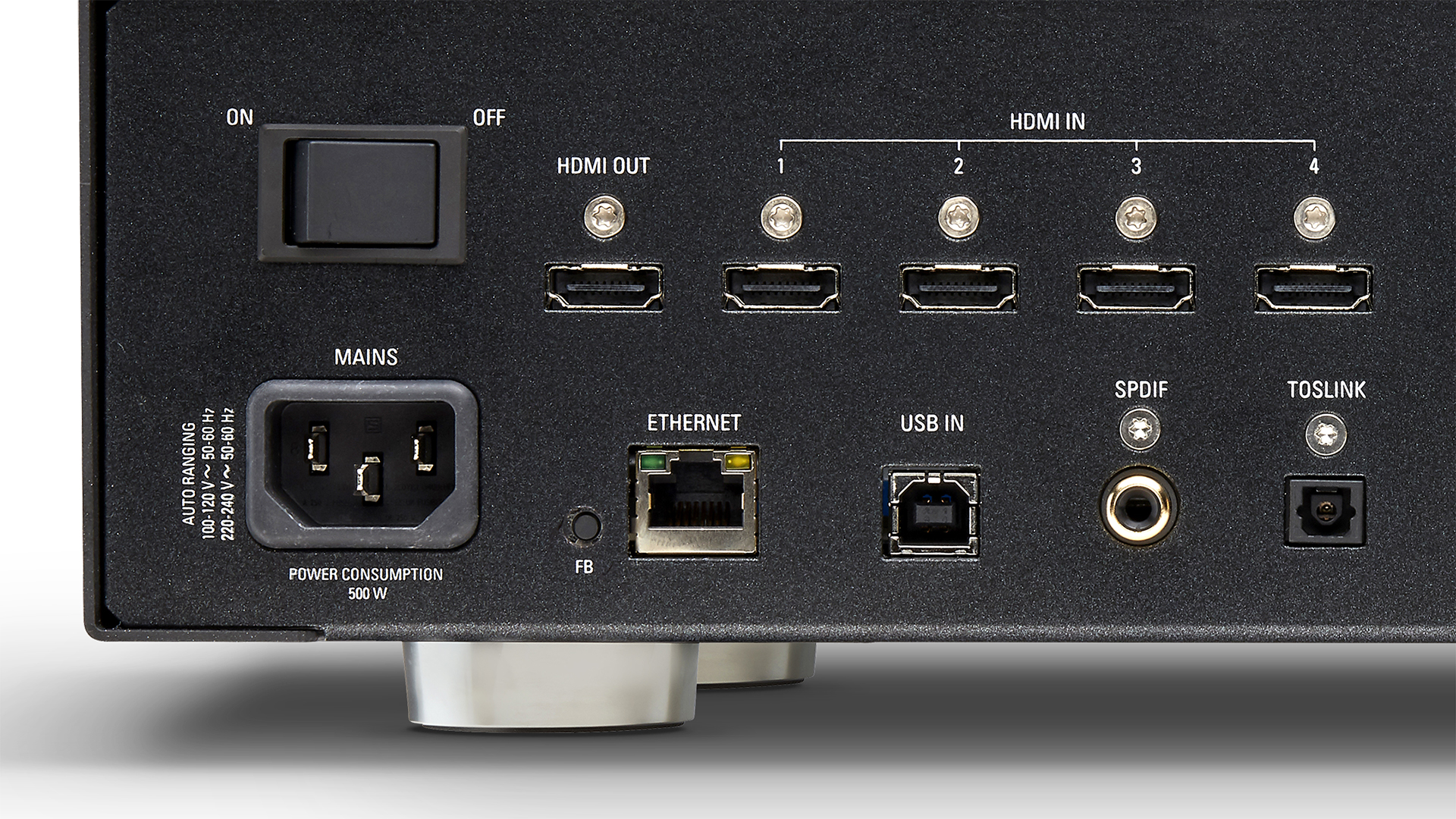What Hi-Fi? Verdict
A welcome refresh has done Linn’s entry-level streaming system wonders, even if it isn’t the most entertaining of its kind we’ve heard
Pros
- +
Clean, organised sound
- +
Comprehensive connectivity
- +
Easy to use app
Cons
- -
Lacks verve
- -
Build not premium
Why you can trust What Hi-Fi?
At the risk of sounding like a hair-ruffling aunt greeting her nephew after a lengthy absence, oh boy, hasn’t streaming grown? That thought comes to mind as we scan the all-inclusive specs of the new Linn Majik DSM.
Ten years ago, we called the original Majik DSM “an interesting proposition”, owing to its then-rare combination of pre and power amplification and music streamer. Fast forward to today and while the Majik has become Linn’s best-selling streaming product of the past decade, the world of music streaming has grown somewhat since.
Audio hardware has followed suit and just-add-speakers streaming systems are now familiar propositions. When executed effectively, they tick the boxes of convenience and connectivity while still offering a great sound. Linn was there at the start, one of few streaming-savvy hi-fi brands around when Spotify was in its infancy, but the competition has now opened up. So how does its entry-level streamer system stack up at the more affordable end of the high-end market?
Features

Like its predecessor, the new Linn Majik DSM has been designed to be the nucleus of an AV and hi-fi system – a one-box solution to which a pair of stereo speakers can be connected. It welcomes all manner of sources, with built-in wi-fi and an ethernet socket the gateways to music (up to 24-bit/192kHz PCM) stored on a network and from streaming services such as Spotify, Tidal, Qobuz and Apple Music.

Hi-res Up to 24-bit/192 kHz
Max power 100W x2 (4 ohms)
Inputs HDMI, optical, coaxial, USB type B, line-level / MM phono
Outputs HDMI ARC, RCA, 6.3mm headphone jack
Finishes x1
Dimensions (hwd) 10 x 35 x 35cm
Weight 4.1kg
There’s internet radio via TuneIn, too, while Bluetooth and AirPlay are quick and easy streaming alternatives for Bluetooth-supporting and Apple devices respectively.
Physical sources from CD players and turntables to TVs and laptops are catered for, courtesy of eight inputs – four 4K-compatible HDMIs and one USB Type B, optical, coaxial (which can be configured as an output) and line-level stereo RCAs.
That single analogue input can be configured as a moving-magnet phono input for anyone wishing to connect a turntable with an MM cartridge. Those going down this route can feel safe in the knowledge that the built-in phono stage uses architecture derived from the company’s reference Urika II model.
The latest hi-fi, home cinema and tech news, reviews, buying advice and deals, direct to your inbox.
The Urika II isn’t the only Linn product to have had its engineering sprinkled over the Majik DSM, either. In addition to Linn enhancing its 100W-per-channel Class D amplification, and implementing a digital volume control in a further effort to reduce distortion, the Majik DSM’s DAC design has been trickled down from the flagship Katalyst streamer. This promises improved upsampling, a lower noise reference voltage and an ultra-low jitter clock for greater timing accuracy.
Build

The Majik DSM’s aesthetic predictably echoes that of the recently refreshed Selekt DSM, with its stylish, glossy black facade, a monochromatic OLED display and six handy preset buttons that offer neat shortcuts to content you can select in the Linn control app (Linn App for iOS; Linn Kazoo for Android).
However, the Majik DSM forgoes the Selekt DSM's top-panel multi-control dial and nicely contoured underside edges, signifying its pecking order below the Selekt in the Linn streaming system range. But while this is entry-level territory for Linn, the Majik DSM's aluminium casework doesn’t feel quite as premium as we might have expected at this price. It’s far from shoddy, though, and we’re generally fond of its classy minimalist appearance.
Unlike the Selekt DSM, the Majik doesn’t have Linn’s advanced Katalyst DAC upgrade or the option for surround speaker terminals. But what it does have is plentiful – as well as the above, that also includes control via the new ‘Linn App’ for iOS users and Linn’s Space Optimisation software.
The former now has a tweaked interface that offers quicker, easier access to browse, search, room selection and system settings, but the headline feature over the former Kazoo iOS app is its universal search, which brings up results across streaming services you’re logged onto and stored music on your network.
Search for 'Michael Jackson', for example, and all MJ tracks and albums on our NAS drive and in the Tidal library appear before us. Though initially perturbed by this function having replaced the in-app Tidal search bar, we soon find ourselves on board with this more encompassing method of navigation.

While Android users will get the Linn App shortly, for now, it’s still the inferior, but functional, Kazoo app. Alternative control is offered through the Majik DSM’s support for Roon, for subscribers of the increasingly popular playback software. There is also a physical remote control, which remains the simplest go-to for volume adjustment.
Linn’s Space Optimisation software (‘space’ stands for ‘Speaker Placement And Custom Environment’) ensures the optimum performance of the Majik DSM and its partnering speakers in your listening environment. It builds a full acoustic picture of your room – based on the placement of connected speakers and the properties of the room – identifies the frequencies being distorted and adjusts frequency response accordingly.
This configuration is typically performed by a Linn specialist, however, the software, which is accessible through Linn’s website, is comprehensive and relatively straightforward to use. The software maps our test room’s dimensions, including wall contours and special features such as doors, and we select the pre-installed profile for our partnering speakers, the ATC SCM50 – Linn says Space Optimisation has profiles for ‘hundreds’ of speakers. Once our profile has been saved, we can simply turn the Majik DSM’s Space Optimisation on or off from the website.
We activate Space Optimisation and note that it draws out some of the bass richness, making way for a cleaner, slightly leaner balance. The presentation has clear gains in articulacy, though it loses some musicality and cohesion in the process and we end up preferring it deactivated. For troublesome rooms, however, Space Optimisation could prove handy in cleaning up unwanted frequencies.
Sound

With or without the neat software, the Linn Majik DSM performs much as we’d expect – that isn’t a criticism, just that Linn is so pleasingly consistent. Like many Linn products before it, it has an open and expansive soundstage filled with crisp, precise detail, and is wonderfully eloquent across the frequency spectrum.
Our listening begins with a newly released live recording of John Williams’ Theme From Jurassic Park and the Linn rises to the occasion, with its wide-open sound only enhancing the sonic spectacle. The horns have headroom to soar, the woodwinds acres of room to weave softly beneath and the surging strings come to the fore with presence and precision, carrying the detail and dynamics necessary to evoke the necessary sentiment in its listener.
Radical Face’s Sunlight proves a great indication of the Majik DSM’s analytical, articulate approach too. The Majik DSM handles the acoustic plucking shrewdly, each twanged note tangible and dynamically varied. Even when the tunefully delivered descending bass line, crisply-drawn drumbeat and the subdued piano melody crash the initial party, the Linn keeps tabs on every element, steering everything into the right direction like a conductor controlling an orchestra.
The denser the composition gets, as Ben Cooper‘s storytelling and the bed of strings enter the mix, the more impressed we are by its refusal to sound flustered. We’ve come to expect this kind of precision from Linn products and the Majik DSM doesn’t stray far from that.
The Linn’s openness and organisation plays into the hands of Oneohtrix Point Never’s Toys 2, the experimental orchestration having space to unfold while never sounding too condensed or incoherent. Each squeak, fizz and scratch comes through with cleanliness and clarity, and an openness that the more affordable What Hi-Fi? Award-winning Naim Uniti Atom cannot match.
However, the interplay between the synths underpinning the track isn’t as tight through the Linn, as its Naim rival stitches the sequences together with more rhythmic purpose. The Naim, while not as technically adroit as the Linn in some areas, comes across as the more entertaining machine.
Similarly, as we move onto Gang of Youth’s What Can I Do If the Fire Goes Out?, the Linn doesn’t quite relay the excitement of this relentless foot-tapper of a track. The Naim is more energetic, pummelling through the cyclical drumbeat and piercingly shrill synths, whereas the Majik DSM’s rendition is comparatively reserved. It doesn’t exactly rob the track of all energy and drive, it simply comes across as more concerned with dotting the ‘i’s and crossing the ‘t’s than simply writing the letters in big, bold, colourful text, as the track demands.
Verdict
The Linn Majik DSM is not as versatile and all-encompassing in the sound department as it is for its features and that ultimately costs it a fifth star. However, it is still a highly desirable machine – especially for the music fan whose sonic preference errs more on the side of analytical than animated. It can accommodate a wide range of sources, is easy to use and sounds good.
Music streaming has come a long way over the past few years, and Linn’s just-add-speakers system shows just how high-quality, convenient and flexible such propositions can be.
SCORES
- Sound 4
- Features 5
- Build 4
MORE:
Read our guide to the best music streamers
Read our Naim Uniti Atom review
Read our Linn Selekt DSM review
What Hi-Fi?, founded in 1976, is the world's leading independent guide to buying and owning hi-fi and home entertainment products. Our comprehensive tests help you buy the very best for your money, with our advice sections giving you step-by-step information on how to get even more from your music and movies. Everything is tested by our dedicated team of in-house reviewers in our custom-built test rooms in London, Reading and Bath. Our coveted five-star rating and Awards are recognised all over the world as the ultimate seal of approval, so you can buy with absolute confidence.

